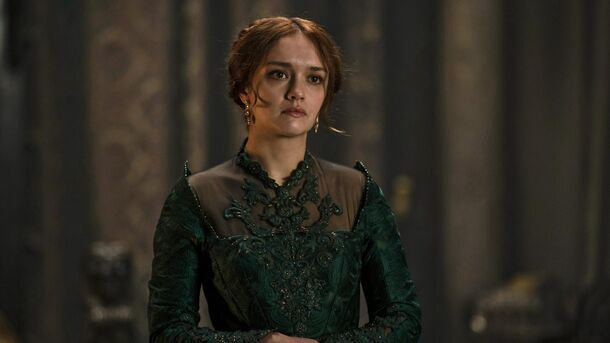
It had potential but seems to be another flop.
After the disappointment of the Game of Thrones finale, many viewers decided not to follow any other projects the creators might come up with as part of the same universe. However, the adaptation of George R.R. Martin’s Fire & Blood into a Targaryen-centric prequel, House of the Dragon, has brought everyone back.
The hopes of the fans were high since Fire & Blood was already a finished novel and there was no need to mess with the plot. But the writers did, and now the fans are dealing with the consequences. Here are 6 major changes in the book that make us think that the finale of House of Dragons will be as disappointing as the finale of Game of Thrones.
Alicent Hightower and Rhaenyra Targaryen’s Book Age
Anyone who has read Fire & Bood knows that the book leans much more heavily on the ‘evil stepmother’ trope for Alicent and Rhaenyra. When Alicent marries King Viserys and becomes queen in the book, she is 18 or 19 years old, similar to her show counterpart. The book version of Rhaenyra, however, is significantly younger at 9 years old.
While it is safe to say that Rhaenyra’s character has only benefited from the age change, the dynamic between the two women has changed significantly and continues to affect major plot points in the show’s second season.
King Viserys Targaryen’s Reign
.jpg)
One of the key points in the book that the show’s creators decided to change is King Viserys’ outlook and motivations. In George R.R. Martin’s novel, he was much more carefree and much younger. He wasn’t bound by grief, and he was happy with his second wife, who also enjoyed the privileges of the life she’d gotten for herself much more.
It was nice to see more depth in King Viserys, and Paddy Considine’s brilliant performance was worth all the changes, but the change in narrative has permanently changed the direction of the show.
The Prophecy
.jpg)
Of course, House of the Dragon had to remind viewers that it was connected to Game of Thrones in every way possible, in case anyone forgot which line Daenerys the Stormborn came from. The prophecy was a cool but unnecessary way to tie two shows together, and it was quickly overused.
A little easter egg mention would have been more than enough to keep viewers happy without putting so much emphasis on a part that wasn’t even mentioned in the book.
King Aegon’s Coronation
.jpg)
Rhaenys breaking out of the dragon pit to ruin Aegon’s coronation scene would have been a really badass scene if it had any meaning other than murdering a few hundred commoners.
That moment was written into the show from scratch, as she was never even close to Kings Landing during the coronation in the book, and many to this day prefer it stayed that way. Neither did she prove herself tough by killing the usurpers when she had the chance, nor was she a victim of the Greens. Just nonsense all around.
Daemon’s Marriage to Laena

Though the couple seemed somewhat happy on screen, they were even happier in the books. In the show, the writers did their best to dehumanize Daemon, making him keep Laena from seeing her family in the Driftmark and making him a distant father to his daughters, Baela and Rhaena. In the book, however, things were different for all of them.
Daemon was an involved father, and Rhaenyra herself actually visited the couple and spent time with them all. The ruthless sociopath persona must have just suited the new narrative better.
Alicent Hightower’s Moral Conflict

It is clear from the show that Rhaenyra and Alicent, who were both teenagers when Alicent was married to Viserys and had a strong bond, are both still struggling to accept the state of war. Alicent tries to communicate with Rhaenyra through letters, while Rhaenyra flees Dragonstone to sneak in and talk to Alicent in person.
In the book, Alicent did not struggle nearly as much. As soon as Aegon II was born, Alicent was determined to put him on the throne and destroy Rhaenyra’s claim. If the show had kept her character as strong a villain as she was in Fire & Blood, House of the Dragon wouldn’t have been as melodramatic as it became.





